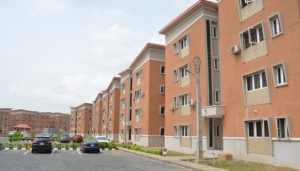Huge market potentials for prefabricated buildings
Recently, frequent implementation of affordable housing support policies has created huge market potentials for prefabricated and green buildings. Market analysis pointed out that PC component manufacturers in the prefabricated construction supply chain will be key beneficiaries from these new policies.
As the most preferred brand in the prefabricated construction industry for three consecutive years, Broad Homes (02163.HK) will likely benefit from the recent policy catalysts. To highlight, the Company operates in both to-B and to-C business under its dual mode business model, which gives the Company potential to grasp onto a larger market share in this industry uptrend.
First and second tier cities are actively responding to affordable housing policies.
According to market data, since the beginning of December 2021, the Prefabricated Building Index (931020) rose nearly 10%, driven by discussions during the Politburo meeting in December to further promote construction of affordable housing.
Similar discussions also took place during the Central Economic Work Conference, indicating growing interest from high-level officials.
In the past year, affordable housing support policies have been frequently issued. The Politburo meeting mentioned the promotion of affordable housing construction for the first time in April and again in December.
In addition, in July, the Politburo discussed the need to accelerate rental housing development and implemented supporting policies surrounding land usage and taxation.
During the Central Economic Work Conference in December, discussions surrounding the need to “accelerate the development of the long-term rental housing market, promote the construction of indemnificatory housing, support the commercial housing market and better meet reasonable housing needs of buyers” were highlighted.
Huachuang Securities pointed out that both the Politburo meeting and the Central Economic Work Conference have prioritised affordable housing before commercial housing, reiterating high-level officials’ focus on affordable housing.
In terms of specific development goals, the Ministry of Housing and Urban-Rural Development issued the “Notice on the Monitoring and Evaluation of the Development of Affordable Rental Housing in 2021” in November 2021.
The notice outlined that during the “14th Five-Year Plan” period, the supply of affordable rental housing will be largely increased, and the proportion of new affordable rental housing to total new housing supply is targeted to reach 30% or more.
Meanwhile, key first and second tier cities have responded actively to recent policies and announced relevant targets for affordable housing construction during the “14th Five-Year Plan” period.




